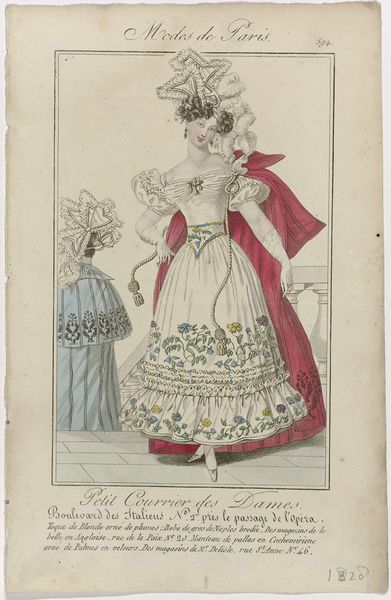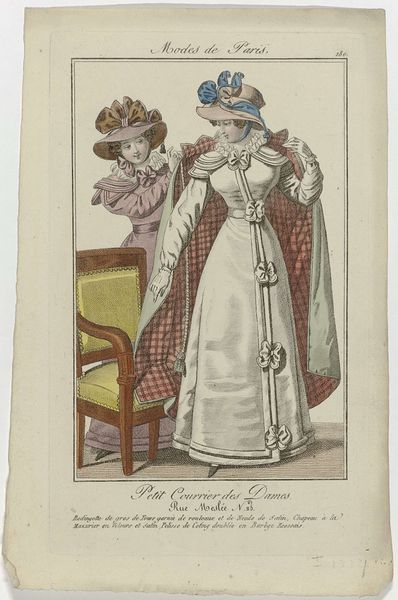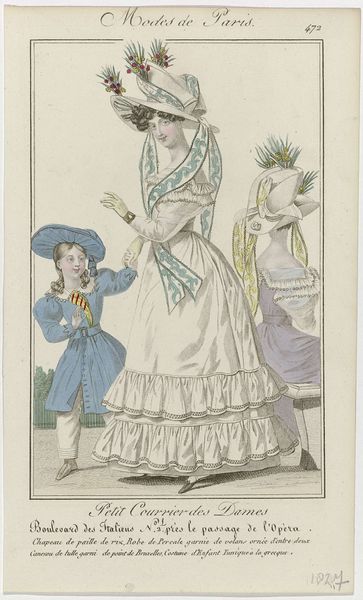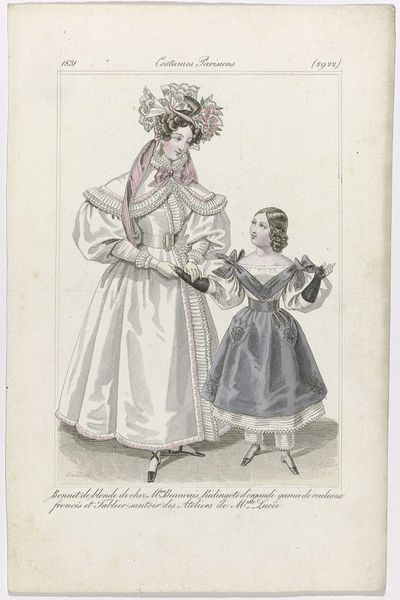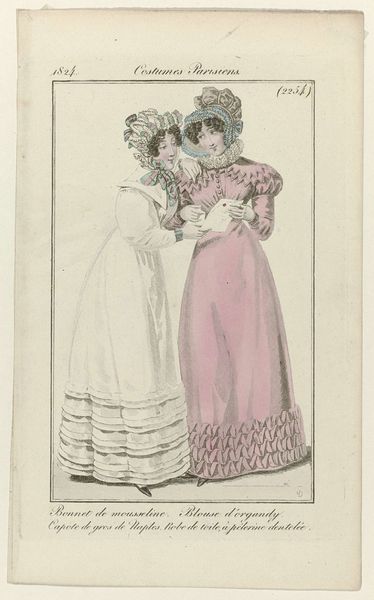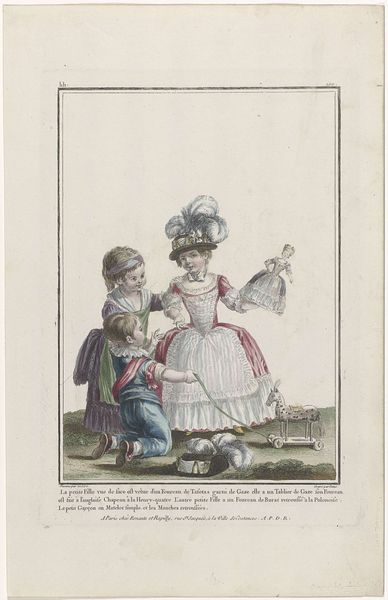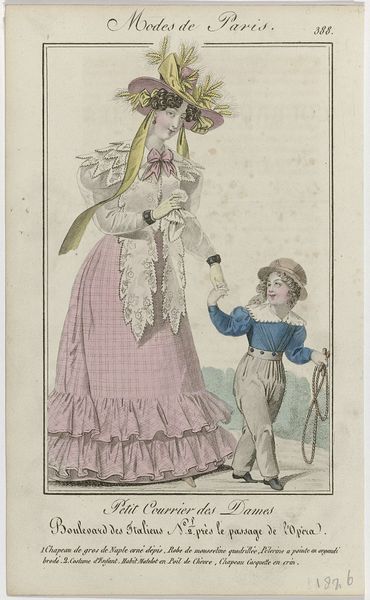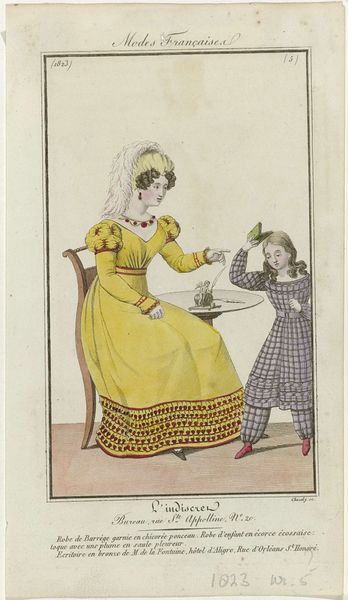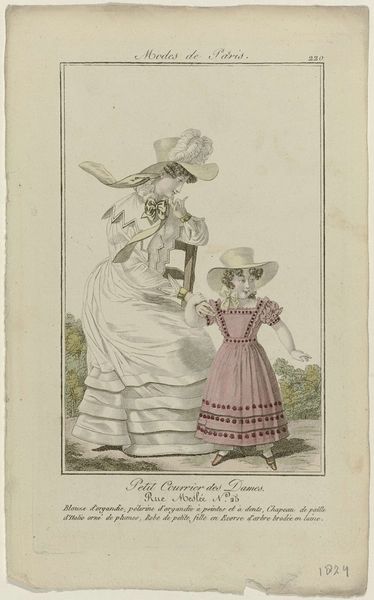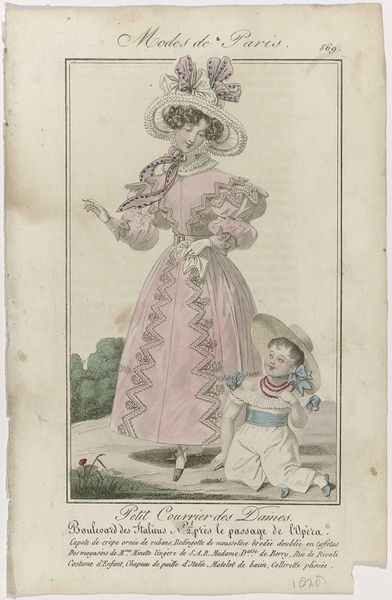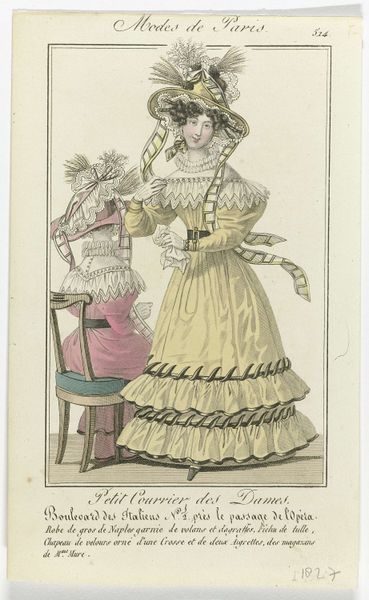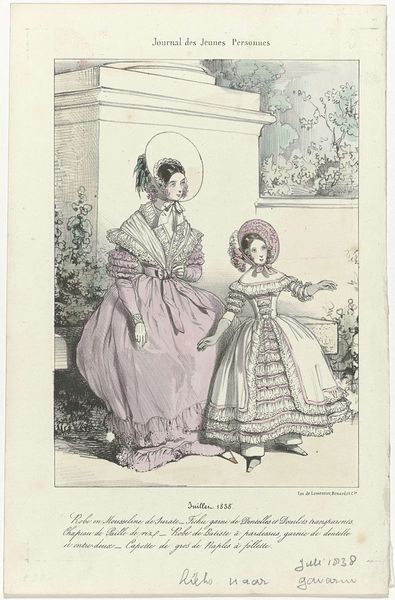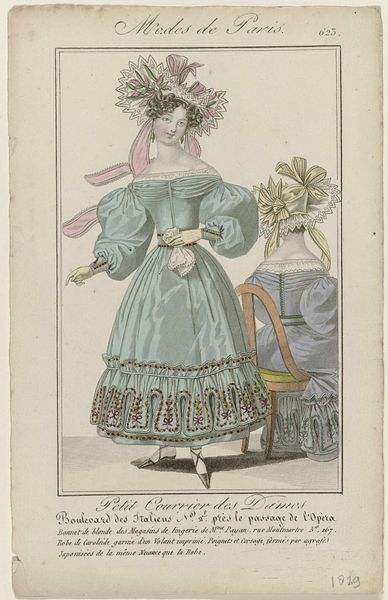
drawing, print
#
portrait
#
drawing
# print
#
figuration
#
romanticism
#
watercolour illustration
#
genre-painting
#
dress
#
watercolor
Dimensions: height 196 mm, width 119 mm
Copyright: Rijks Museum: Open Domain
Editor: So, here we have a print titled "Petit Courrier des Dames, 1822, No. 58" by August Delvaux. It appears to be a fashion plate. The focus is clearly on the dress, and what immediately strikes me is the crepe fabric—it looks so delicate. How should we interpret this piece? Curator: Look beyond the surface appeal of "delicate fabric". This isn't simply a record of fashion. Let's think about what crepe fabric *means* in 1822. It represents not just wealth but a specific kind of consumption. Crepe was relatively new and expensive, a status symbol dependent on global trade networks. Consider also the *process* of creating this print. It was designed to circulate and fuel further desire for this specific type of commodity. Does the "dress" as a marker of social status stand out? Editor: It definitely does now that you mention the material’s connection to trade. It’s interesting how what appears decorative is actually loaded with socio-economic meaning. What about the inclusion of the child-like figure wearing similar decorative elements, what purpose does this choice play in your view? Curator: Exactly. The repetition highlights not just style, but aspiration. And consider the printing process itself. The material act of making the image supports further the endless cycle of desire. How do you think the industrial printing impacts its cultural footprint? Editor: It’s almost like the print is a piece of advertising meant to create desire through image circulation, something meant for popular consumption as opposed to private appreciation. Curator: Precisely. The material production *is* the message. It challenges the traditional view of art being separate from commerce, don’t you agree? Editor: Yes, understanding the materiality definitely shifts my perspective. Thanks, this was really insightful. Curator: My pleasure. Examining the physical reality of an artwork, where it came from and how it was made, reveals much about the values and dynamics of its time.
Comments
No comments
Be the first to comment and join the conversation on the ultimate creative platform.
